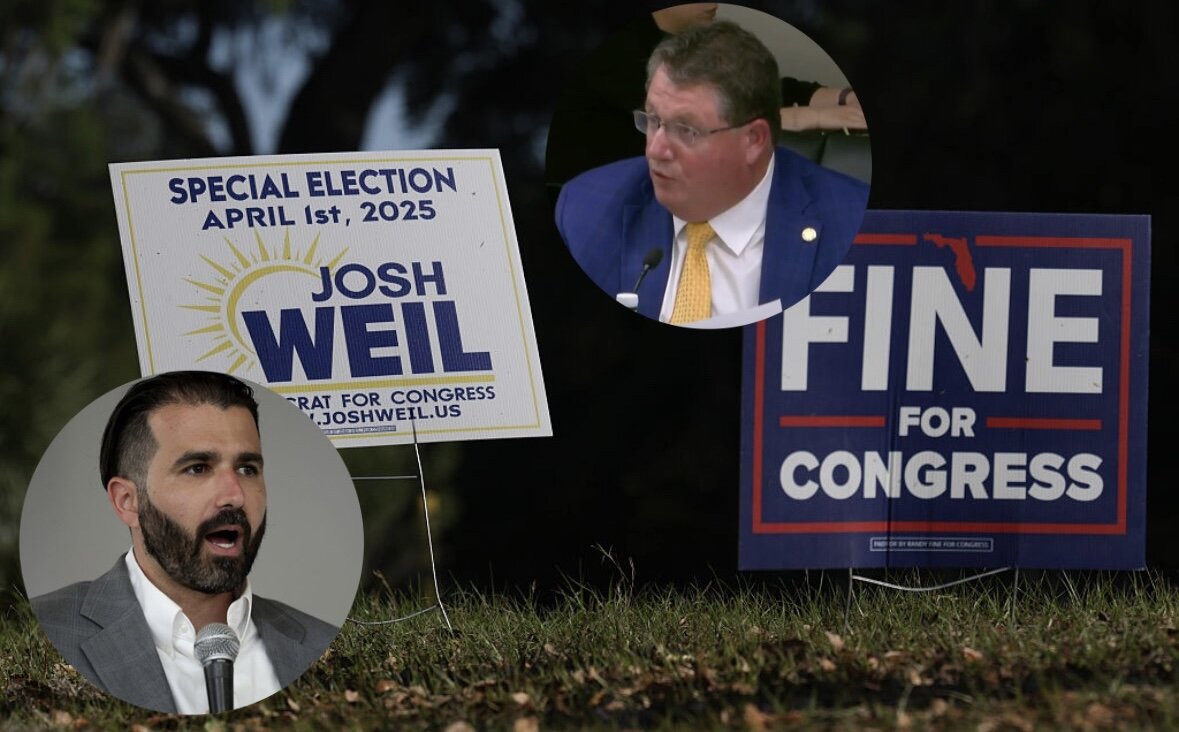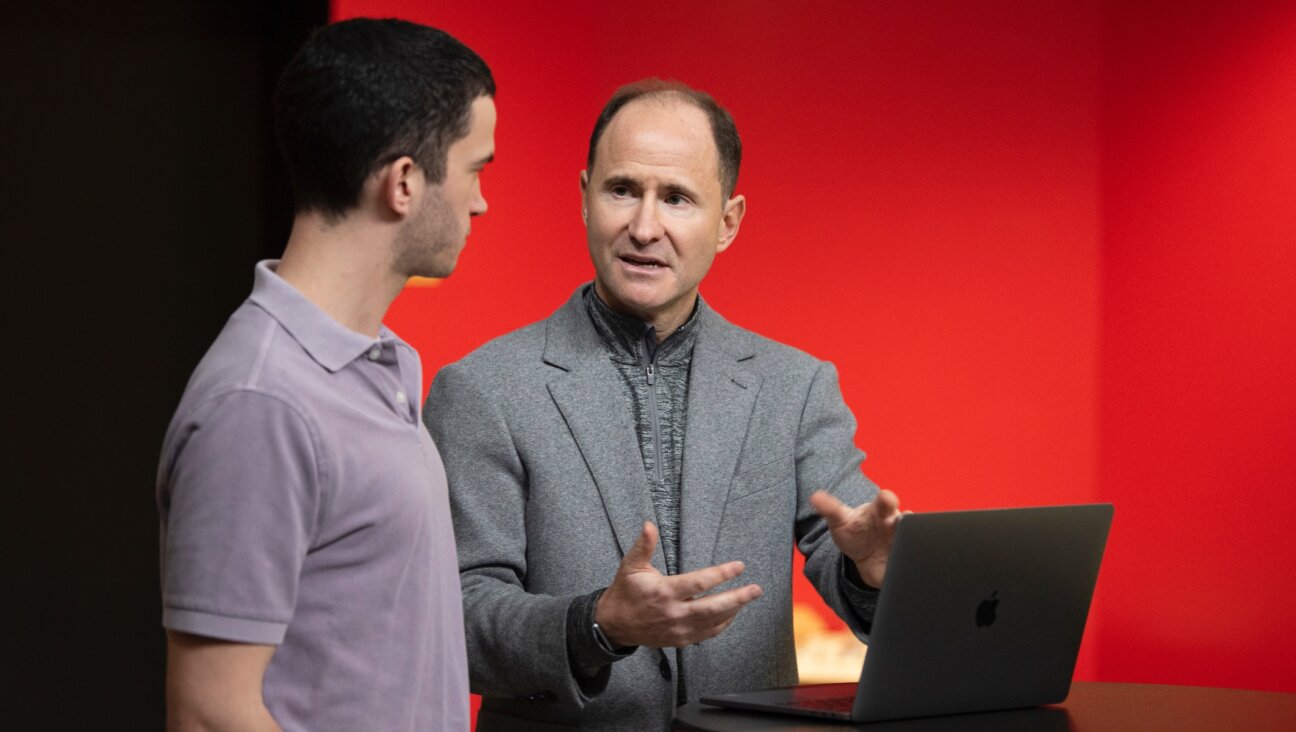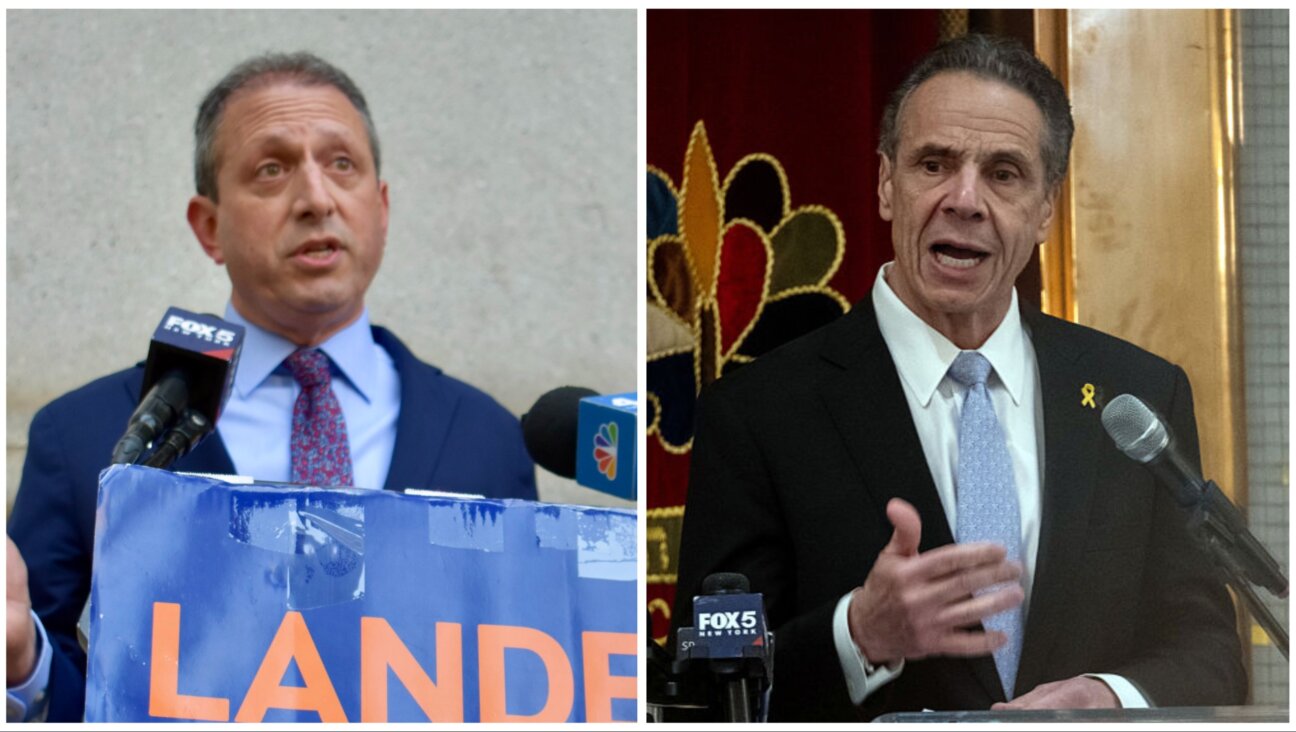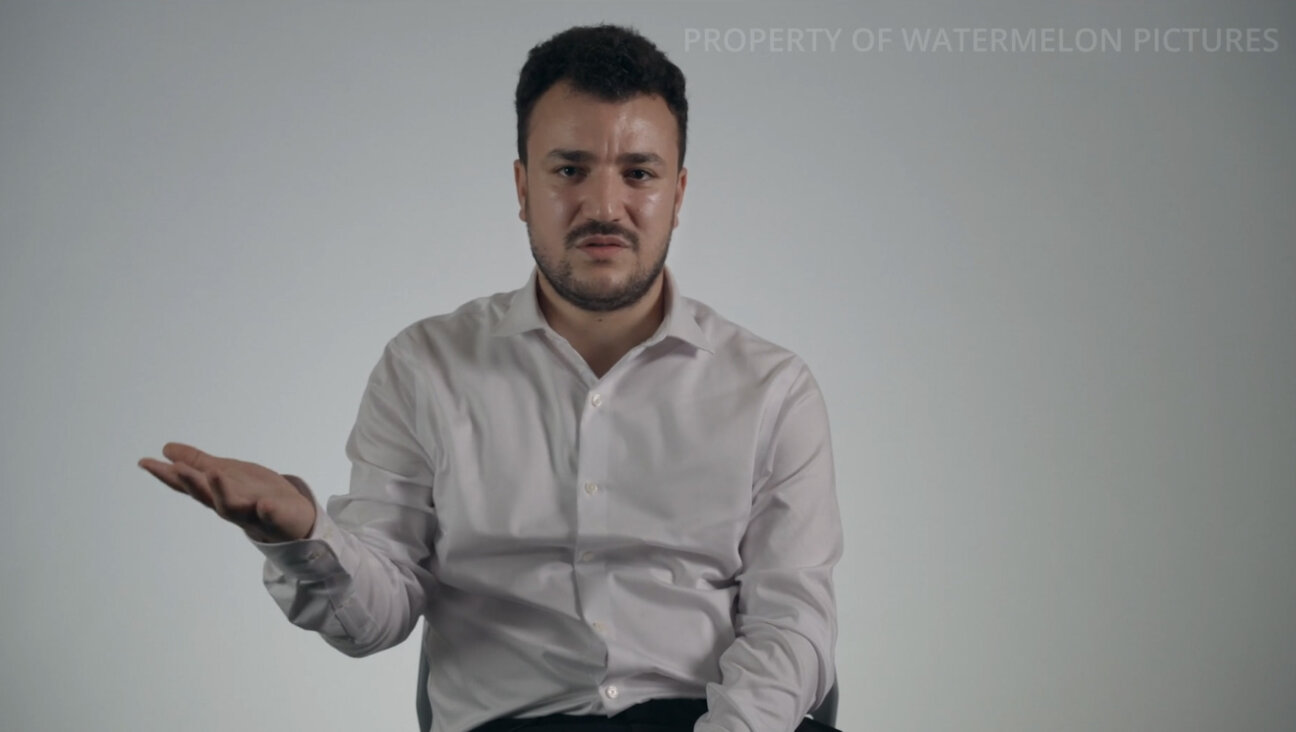No Heart-Shaped Boxes for Me, Please
I suppose Valentine’s Day might be better than a poke in the eye with a sharp stick, but the stick would have to be really sharp. And have thorns. And be dipped in battery acid and Donald Rumsfeld’s saliva. Because Valentine’s Day is very, very far down on my list of life’s pleasures.
I did not grow up with Valentine’s Day. I went to Jewish day school, so I didn’t have to deal with the whole how-popular-are-you, how-many-did-you-get mishegas surrounding valentines. (No, our people relied on Camp Ramah Shabbat-o-Grams to show us our place in the social order.) Most of my childhood knowledge of Valentine’s Day was gleaned from Peanuts cartoons, with Charlie Brown pining for the Little Red-Haired Girl and staring at his empty mailbox while everybody and his dog (literally, his dog) is getting showered with love notes. My bubbe sent my little brother and me valentines when we were really tiny, but she stopped, and I never felt I was missing much. When I got to (public) high school, Valentine’s Day meant cheerleaders and football players making out in the hallways, with maximum display of tongue. I retreated to theater club, with My People — new wavers in asymmetrical haircuts, people who could sing the entire score of “Evita” and homosexuals. (There was some overlap among these groups.) When I read that a billion cards are purchased for Valentine’s Day (it’s the second-biggest card-buying holiday in America, trumped only by Christmas), I sneered.
I was still working my cynic act as a young adult. Then I met Jonathan. After a year of friendship and flirtation and dating other people and pretending we weren’t totally hot for each other, we got together. On February 13.
I quickly learned that my new boyfriend was not like me. For four years, until we got married, our anniversary worked him into a lather of anxiety. He felt major pressure to perform. Expensive presents, fancy dinners. But there was a sense of duty about it all. I felt — dare I say it? — as though he resented me for having to go through the whole rigmarole every year. And whenever I suggested skipping it, he looked at me with suspicion, as if I were just trying to get him to lower his valentinian guard so I could get him a really awesome gift and make him beholden unto me — only to cry when he didn’t get me anything. Like “The Gift of the Magi,” but with only one gift and the man tortured by guilt for the rest of his life.
As he explains now, Valentine’s Day had huge power in his childhood. His mom is a major gifter, card-sender and lover of over-the-top seasonal decorations. Today, holidays, birthdays and anniversaries cause him tremendous anxiety, and getting him to write a thank-you note is about as easy as getting William Shatner to sing on-key. He says, “I know it’s passive-aggressive. I’m happy to have recognition of holidays as markers of time and recognition of love people feel for each other, but I hate the $3 cards and the obligation and the big deal of it all.”
Whether you’re single or in a relationship, Valentine’s Day brings those anxieties to the fore. If you’re single, you often feel like a solo aardvark watching Noah’s Ark fill up with happily coupled emus and lemurs, and guess what, it’s starting to drizzle. If you’re coupled, you feel pressured to get your romance on, slipping into hushed, goo-goo-eyed passion as if it were a cheap teddy from Frederick’s of Hollywood. My friend Gayle used to be a waitress at a fancy restaurant in Eugene, Ore., and reports that Valentine’s Day was always weird. “People would be tense. If it was a weeknight, they’d just be tired, so they’d fight. And they’d order dinner with no garlic. I always thought, ‘What kind of a relationship do you have that can’t survive garlic breath?’”
And yes, I know you’ve been waiting for seven paragraphs for me to say it: Dang it all, Valentine’s Day is goyish. Its history may be murky — there are several candidates for a historical St. Valentine, the most popular being a third-century Roman priest who officiated at weddings, thus violating Emperor Claudius’s orders. (The emperor supposedly believed that single men were more likely to join his army.) Valentine was caught and imprisoned. Shortly before his execution, on February 14, he sent a friend a note signed “From Your Valentine.” Nice way to start a tradition. A more important figure in the commodification of Valentine’s Day is probably Esther Howland, a Worcester, Mass., woman who produced the first commercial American valentines. In 1847, at age 19, she graduated from Mount Holyoke College, convinced her father to buy lace and supplies, sent her salesman brother out with samples, expected $200 in orders and received $5,000 in advance sales. (Since she couldn’t fulfill all those orders herself, she hired ladies to assemble the cards piecemeal, predating Henry Ford’s assembly line by 66 years.) But my point here, and I do have one, is that both St. Valentine and Esther Howland died single.
Seriously, it isn’t officially a religious holiday. In 1969, Pope Paul VI dropped it from the calendar, but once that box of chocolate-covered cherries had been opened, no one could put the lid back on it. And the origins of Valentine’s Day may very well be older than Christianity; it probably had its roots in a pagan fertility festival.
Some Jews are pushing Tu B’Av as a substitute for Valentine’s Day. The Talmud talks about a day on which women wore white dresses (borrowed, so that even poor chicks could have a shot) and danced in open fields, encouraging the men to come on down and pick their brides. Even the outcast tribe of Benjamin was allowed to get with the gals of
the other tribes on Tu B’Av. In Israel, it’s apparently a day of singles’ events.
Eek. This reeks of pimping Chanukah as a substitute for Christmas Eve or Purim as a Jewish version of Halloween. We already have the Matzoh Ball on Christmas, a mixer for Jewish singles here in New York. Now we’ve gotta keep the matchmaking frenzy going in the middle of summer, when we’re all sweaty and unattractive? Why must we always try to compete with the goyim? Either celebrate Valentine’s Day and admit that you’re selling out, or ignore it and make your beloved bring you flowers on some random day, to be chosen by him, when you’re not expecting it and you’re changing the kitty litter and you’ve got Play-Doh in your hair. He’s more likely to get some action when he surprises you than on a mandatory forced-romance holiday (when you’re already stuffed full of fancy cholesterol-raising food and too logy to get busy) anyway.
Hey, my kid is 2. I may regret this when she and I are both older and wiser, but I’m letting her go to a valentine-making party. My mother-in-law has sent Josie cards and gifts, and I’m not going to ask her to stop. (Unlike my own mother, who just told me that the cards from Bubbe had stopped coming because my mom had told her to cut it out!) This isn’t a battle I want to go to the mat about.
But in my heart-shaped heart, I hope that one day February 14 is more associated with V-Day, the global movement to end violence against women, than Valentine’s Day. V-Day was started by Eve Ensler, author of the Obie Award-winning play “The Vagina Monologues” (and one of 2003’s Forward 50). Since its inception in 1998, V-Day has raised more than $20 million for battered women’s shelters, rape crisis centers, education and organizations that oppose female genital mutilation. That may not be as indulgent as a heart-shaped soufflé or as sexy as lingerie, but it’s tikkun olam, it’s Jewish, and it’s something we can all agree with — single or coupled, romantic or cynic.
E-mail Marjorie at [email protected].
The Forward is free to read, but it isn’t free to produce

I hope you appreciated this article. Before you go, I’d like to ask you to please support the Forward.
At a time when other newsrooms are closing or cutting back, the Forward has removed its paywall and invested additional resources to report on the ground from Israel and around the U.S. on the impact of the war, rising antisemitism and polarized discourse.
Readers like you make it all possible. We’ve started our Passover Fundraising Drive, and we need 1,800 readers like you to step up to support the Forward by April 21. Members of the Forward board are even matching the first 1,000 gifts, up to $70,000.
This is a great time to support independent Jewish journalism, because every dollar goes twice as far.
— Rachel Fishman Feddersen, Publisher and CEO
2X match on all Passover gifts!
Most Popular
- 1

News A Jewish Republican and Muslim Democrat are suddenly in a tight race for a special seat in Congress
- 2

Fast Forward The NCAA men’s Final Four has 3 Jewish coaches
- 3

Film & TV What Gal Gadot has said about the Israeli-Palestinian conflict
- 4

Fast Forward Cory Booker proclaims, ‘Hineni’ — I am here — 19 hours into anti-Trump Senate speech
In Case You Missed It
-

Fast Forward Hillel CEO says he shares ‘concerns’ over campus deportations, calls for due process
-

Fast Forward Jewish Princeton student accused of assault at protest last year is found not guilty
-

News ‘Qatargate’ and the web of huge scandals rocking Israel, explained
-

News Who would protect New York Jews better? Cuomo and Lander trade attacks on the campaign trail
-
Shop the Forward Store
100% of profits support our journalism
Republish This Story
Please read before republishing
We’re happy to make this story available to republish for free, unless it originated with JTA, Haaretz or another publication (as indicated on the article) and as long as you follow our guidelines.
You must comply with the following:
- Credit the Forward
- Retain our pixel
- Preserve our canonical link in Google search
- Add a noindex tag in Google search
See our full guidelines for more information, and this guide for detail about canonical URLs.
To republish, copy the HTML by clicking on the yellow button to the right; it includes our tracking pixel, all paragraph styles and hyperlinks, the author byline and credit to the Forward. It does not include images; to avoid copyright violations, you must add them manually, following our guidelines. Please email us at [email protected], subject line “republish,” with any questions or to let us know what stories you’re picking up.













